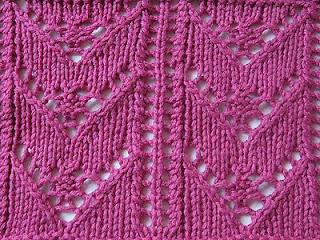Knitting Patterns

Knitting patterns are the basis around which this entire hobby of knitting garments out of yarn is based. For centuries, humans have been working on using needles to convert strings into beautiful try, Cooking - Recipes shapes, all thanks to a variety of simple and complex patterns that create a fantastic mesh out of those strings. Knitting patterns have always been integral to not just the design , TrakPower of the garment or fabric being created, but also to its strength and durability.
There are plenty of knitting patterns or stitches that you can work with but here are a few basic techniques to help you get started without getting overwhelmed.
The Knit Stitch
Start with the yarn behind the work, and insert the needle in your right hand from left to right, through the front of the left hand needle's first stitch. Proceed by winding the yarn over the needle in your right hand. Pull the needle through the loop and slip the original stitch off of the left hand needle to complete the knit stitch.
If you want a knit back stitch, which is a variation of the knit stitch, then all you need to do is that instead of inserting your right-hand needle from the front of the left-hand needle's stitch, insert it from the back. This is a variation that leads to a nice twisted final appearance. why not visit, RC Toys The rest of the steps are exactly the same as for a knit stitch.
The Purl Stitch
After starting with the yarn in front of the work, just insert the right needle from right to left, through the front of the first stitch on the left needle. Then wind the yarn around the right needle before drawing a loop through to the back. Finally, slip the original stitch off of the left needle to complete the stitch.
The reverse of the first step, of this stitch, creates the Purl Back Stitch where the right needle goes in through the back of the left needle's stitch, coming out in the front. The remaining steps remain exactly the same.
The Garter Stitch
A simple combination of a sequence of knit stitches that are placed into a row creates a garter stitch. It is all about repeating the most basic stitch and, effectively, to create a strong pattern that begins from the right side.
Similarly, a Purl stitch can also be used in a row to create different knitting patterns. For e.g. the combination of a row of Purl stitches with a row of Knit stiches leads to the Stocking stitch. This stitch requires the knit stitch to start on the right, while the reverse version is something like the purl stitch followed by a row of knit stitches. By changing the simple knitting patterns or orders ever so slightly, you can put in new patterns into your garments and create something special.
Ribbing
When you start practicing these stitches, you will slowly find your hand settling down and the confidence level rising. That's when you start focusing on getting these stitches done perfectly and adding a little zing to them to finish them off.
Then you might even considering putting in something like a ribbing to keep your garment's edges strong and firm. These ribbings are a part of your garment or fabric that have a higher degree of elasticity and something that makes your garment look more finished. In most cases, you will find something like 1x1 ribbing, which is basically another way of saying that each knit stitch is followed by a purl stitch.
If you come across a 2x2 ribbing, then it is just a case of two knit stitches being followed by a couple of purl stitches. These are fairly common patterns and extremely easy to do, giving you a fantastic design consider, Cooking - Recipes as long as you take care of the purl stitches on the previous row and the knit stitches on the next - i.e. you don't mix them up or unravel one because of the other.
If you are going for a variation of the ribbing, known as fisherman's rib, then you can just insert the right needle into the next set of stitches, but make sure that it is in the row below the stitch made by the left needle. Then, just continue knitting like normal and you will get your corner ribbing.
The thicker your ribbing, the stronger that edge will be and the more unlikely it will be for your garment to tear or unravel. So the next time you take up a knitting project, no matter how simple, make sure you try all your options and experiment because that's the only way to learn and pick up knitting patterns.
 DIY Bathroom Drain DIY Bathroom Drain
DIY bathroom drain projects usually relate to toilets or to blocked drains that take water away from |
 RC Boats RC Boats
RC boats are universal skimming fun that have gained millions of RC boats hobbyists over the years, |
 Collage Artists Collage Artists
Collage artists are increasingly gaining popularity today with the growing influence of information |
 Boat Building Epoxy Boat Building Epoxy
Boat Building epoxy is one of the most important materials that are required for building a good boa |
 Canon Digital Camera Review Canon Digital Camera Review
If you are thinking of buying a digital Canon camera, it's a good idea to look for a good Canon digi |